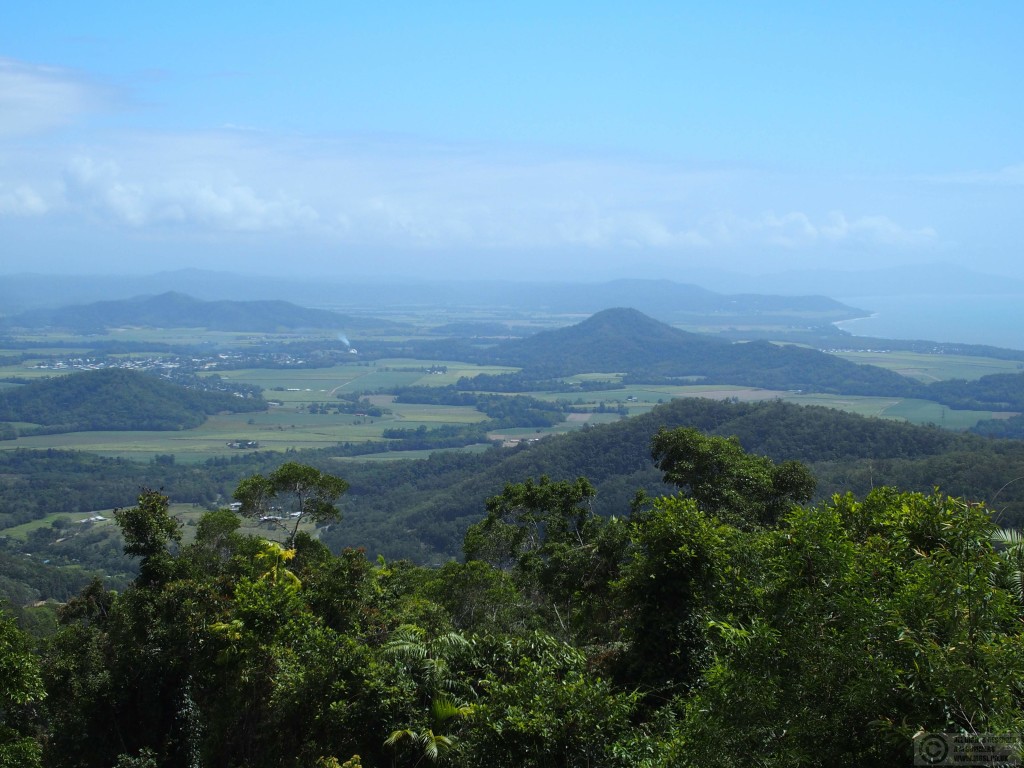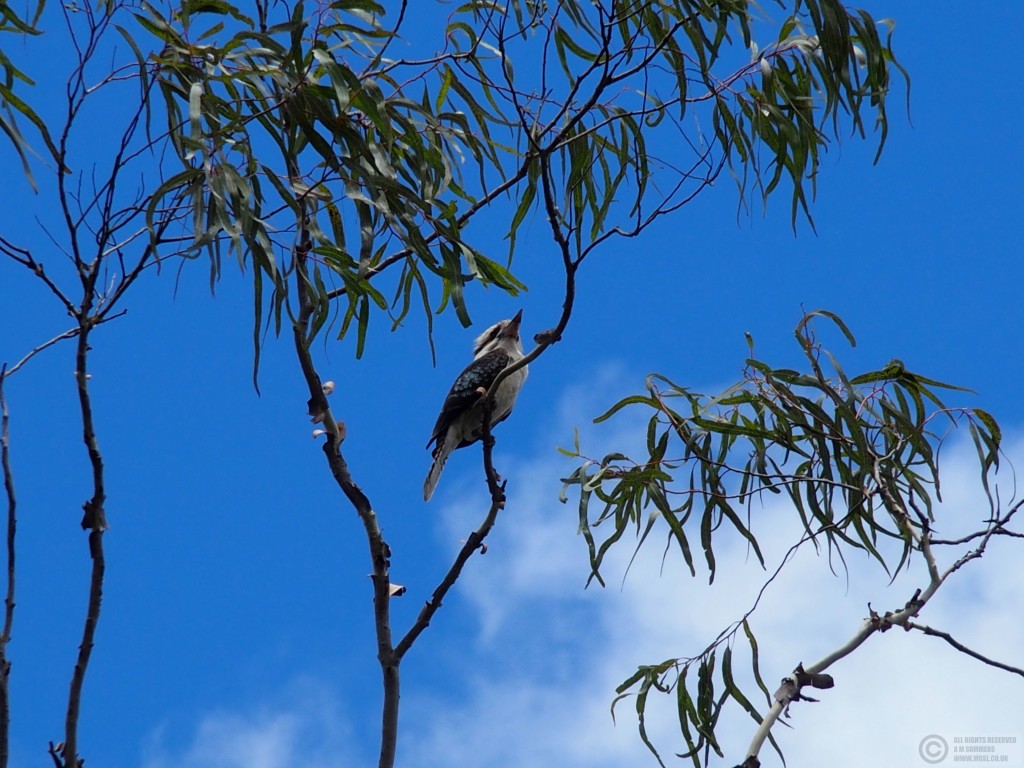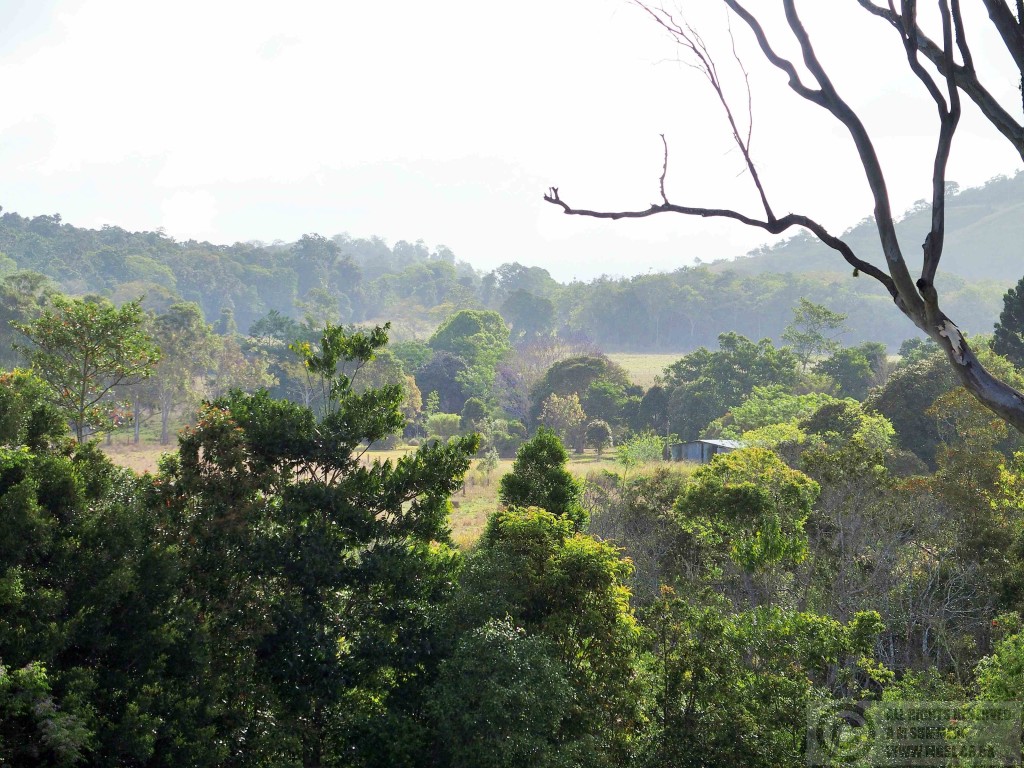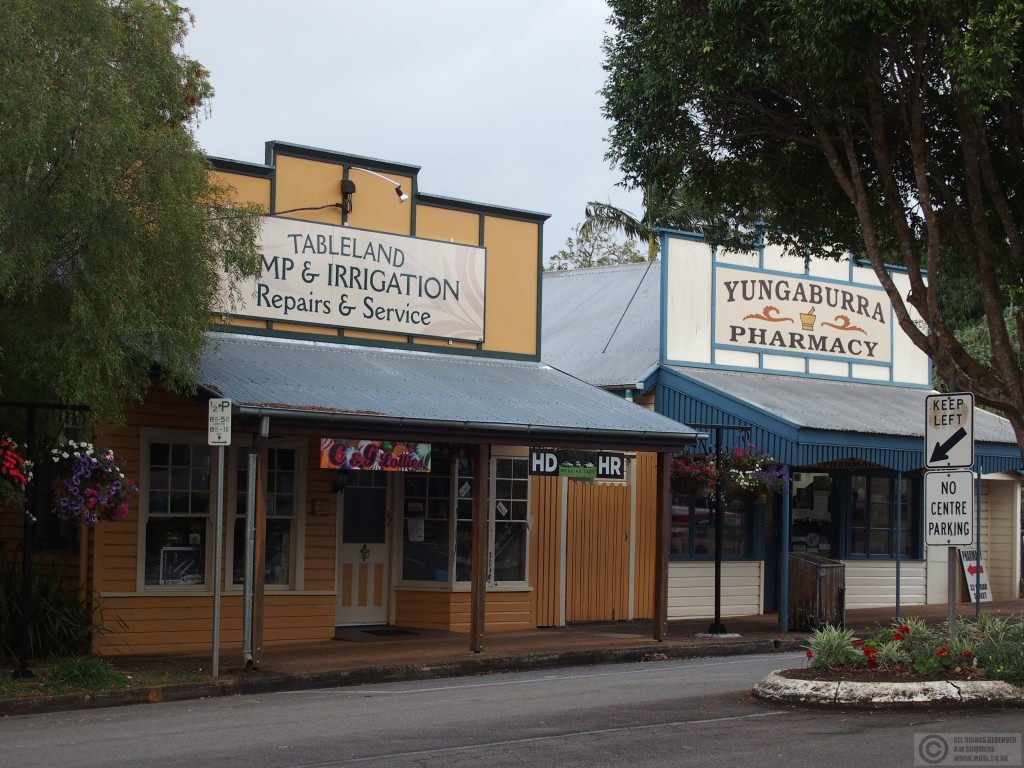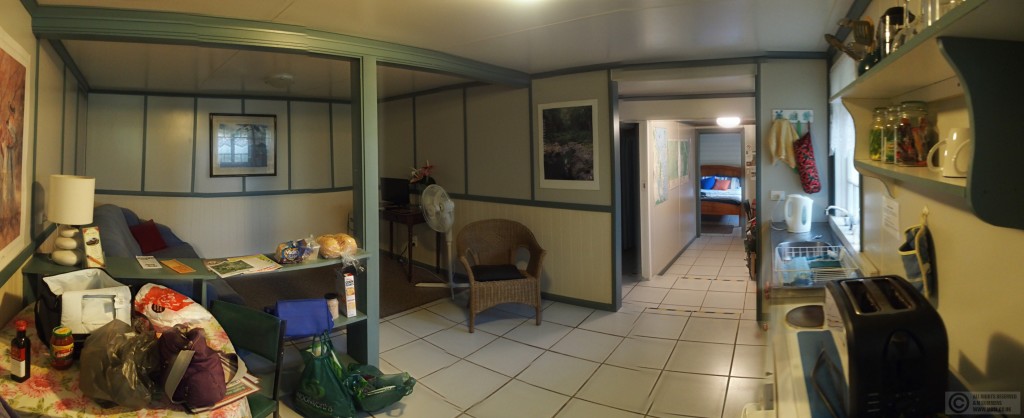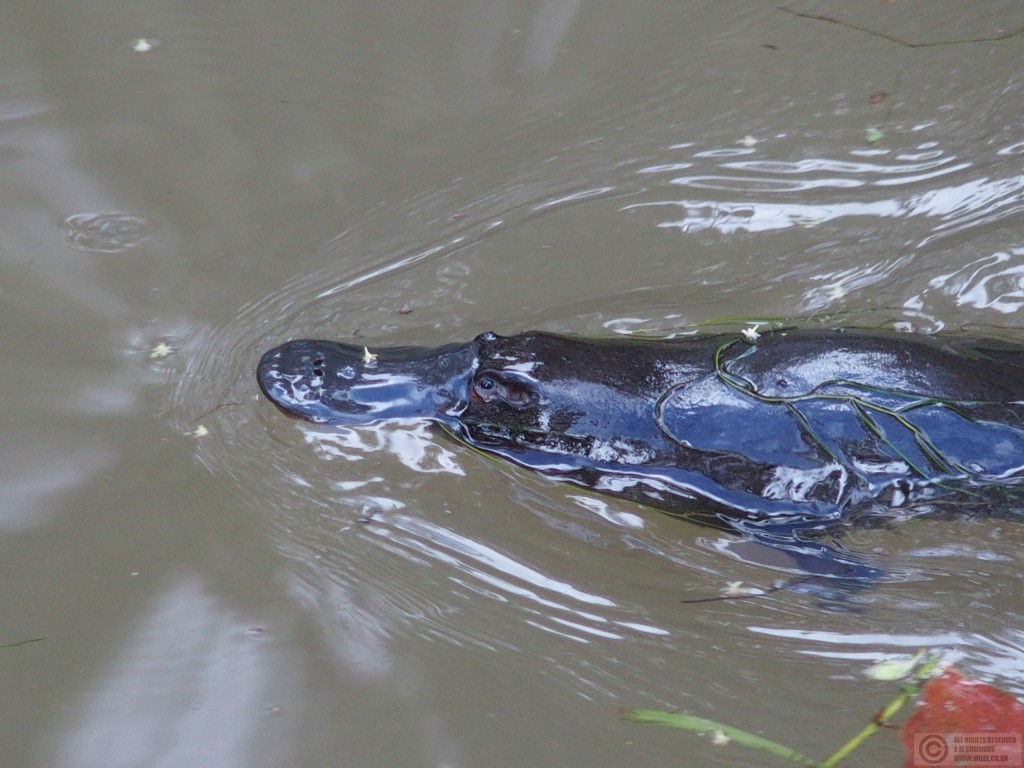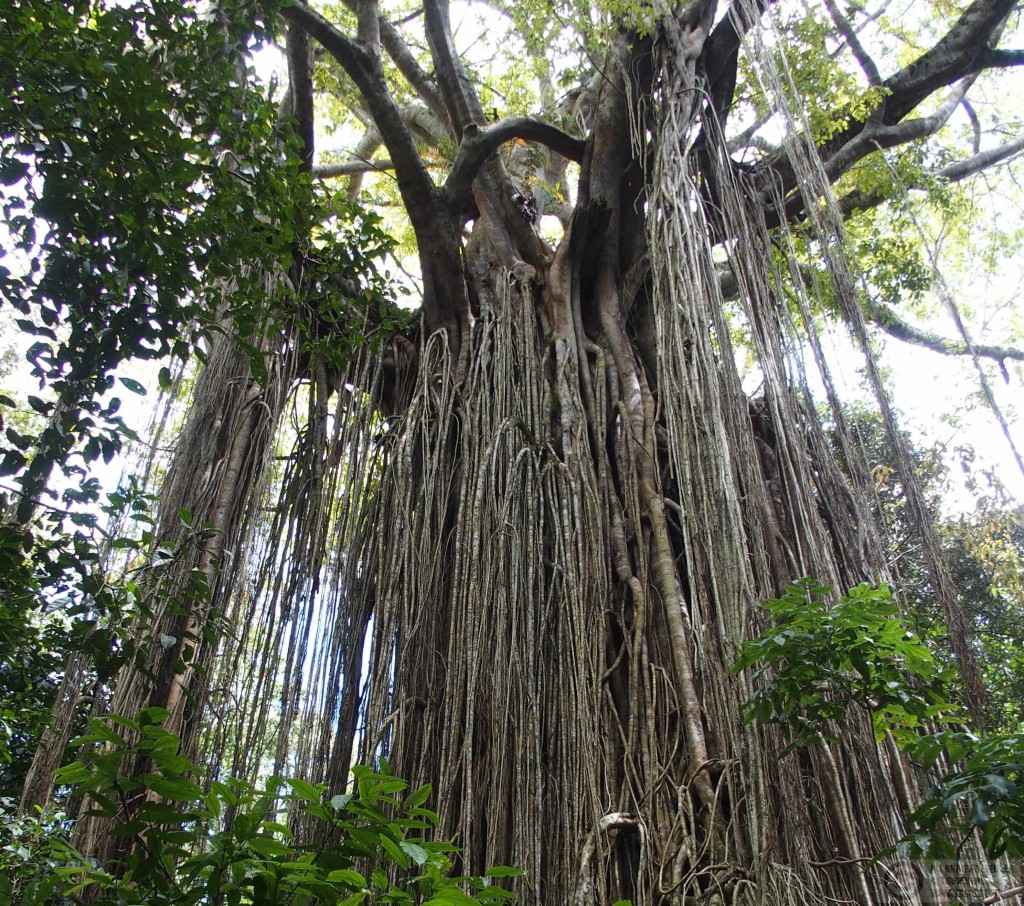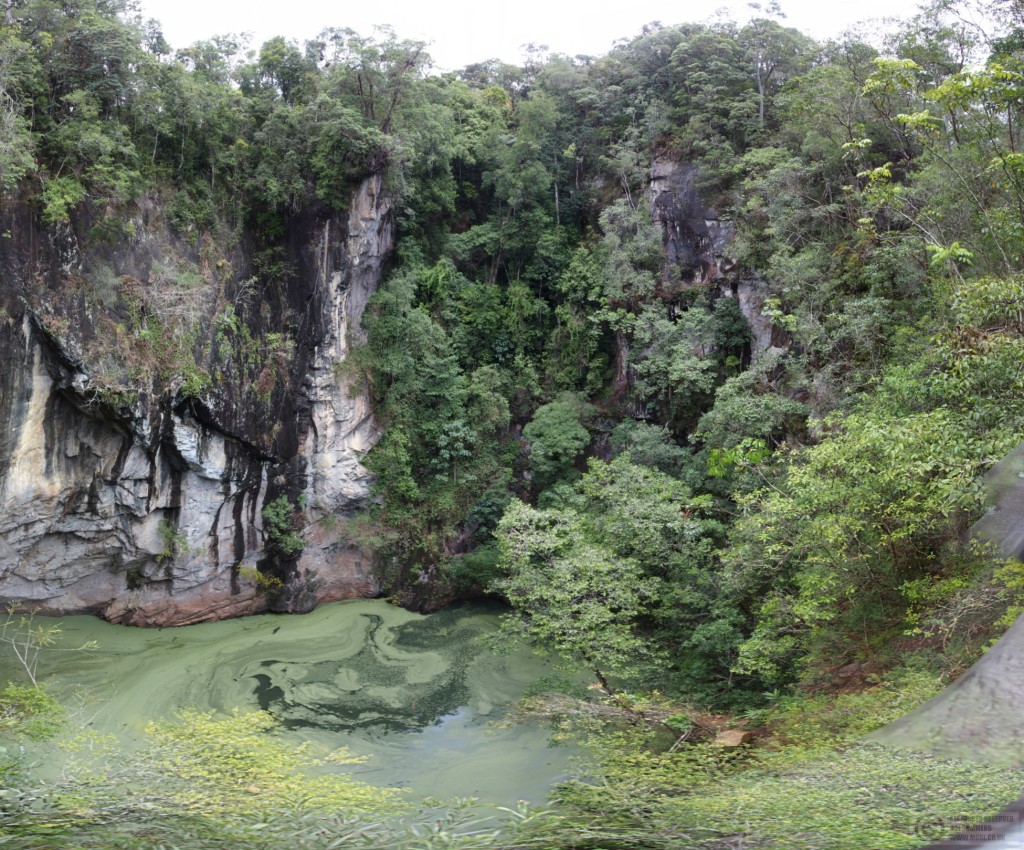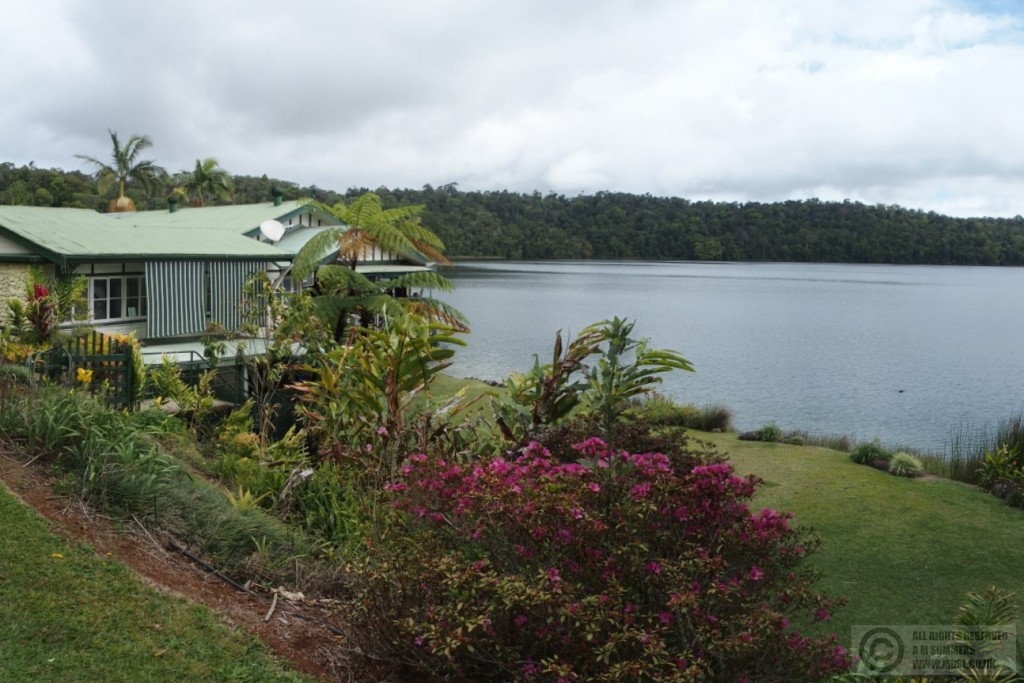Rejoining the main road just south of Mossman, we soon left the canefields behind as the road wound steeply upwards. Occasional breaks in the forest revealed spectacular views down over Mossman and the Daintree beyond, although it was a bit too hazy for good photos.
Once over the ridge the vegetation changed completely. Instead of the dense rainforest to which we’d become accustomed, we drove through sparse dry forest that was very like that in Kakadu. Nearing Mareeba plantations appeared, along with hoardings advertising coffee, mangoes and bananas.
Mareeba was a great place to live – according to several signboards I saw. I’m always a bit sceptical about places that feel the need to advertise themselves in that way. Are they so desperate that they need to try to entice passing motorists to relocate? It seemed a pleasant enough, but unremarkable small town, strung out along the Mulligan Highway. Needing a toilet we stopped at the information centre, which also held a small museum with well displayed artefacts from the town’s earlier years.
On the patch of land next door a haphazard arrangement of stalls signalled that we’d chanced upon the monthly market. Local produce featured heavily but alongside the crafts, plants, fruit & veg and honey were clothes and hardware, things that probably have a limited selection in a town of only 8,000 inhabitants. We bought some kipfler potatoes with no idea what we’d eat them with, but they reminded me of my allotment.
Approaching Atherton the landscape gradually changed into a patchwork of forest and farmland. If you didn’t look closely, it could have been England. We detoured off the main road trying to find a viewpoint at which to eat our lunch. As it turned out the road did not go all the way up to Bones Knob so we just stopped on the verge. Three cows ambled over to check us out – we were probably the most exciting thing to happen that day.
After a stop at Woolworths in Atherton for some little quiches and salad to go with our potatoes, it was on to Yungaburra, a town of quaint, gabled wooden buildings. One of them turned out to be The Gables, our home for the next two nights. Built in 1922, it was apparently it was the oldest house in town, and it stood next to the teeniest little church (also wood) that I’ve ever seen.
Our apartment took up most of the ground floor and while it was a bit dated and ramshackle, it kind of went with the house. And anyway, at £45 a night it was very cheap by Australian standards. It was a good thing we’d bought provisions in Atherton though, as Yunguburra’s small supermarket had burned down a couple of days before.
After a quick coffee we set off down to the river, following the directions that the Gables’ owner had given us. Halfway between the two bridges, swimming down the middle of the stream, there was the reason we’d come to Yunguburra – a platypus! It was smaller and darker than I’d imagined and rather comical in the way it swam, its front legs out to the sides and whirling like kayak paddles. It was easy to see why naturalists suspected a hoax when the first pelt and sketches arrived in England. Further upstream, nearer the road, another individual was foraging near the bank, ducking into the milky tea water and bobbing up a few seconds later.
It’s wasn’t just the landscape of the Atherton Tableland that was reminiscent of England – grey clouds, blustery showers and a distinct chill in the air made it feel more like an English spring than an Australian one. It was unseasonably cold according to our host at the Gables, who was wearing a jumper with his shorts and socks with his sandals. I wondered just how cold it would have to be for an Australian to put on long trousers.
Our first stop the next morning was the Curtain Fig – just an ordinary strangler fig, but its host tree had fallen to rest at an angle causing the fig to send down a curtain of aerial roots. I half expected Indiana Jones to be lurking in its shadows.
Walking through the forest at Wongabel, one of the few remaining patches of the original Mabi Forest (spared from clearance by an extraordinary number of large basalt boulders), we kept a sharp lookout for the rare tree kangaroos that live there in – but saw only birds, although there were plenty of them.
We managed to arrive at Hypipamee during a heavy shower, so ate our sandwiches in the car while we waited for it to pass. Three or four Brush Turkeys came out to stalk around the car park looking for food. As we walked to the crater we had glimpses of the upper levels of the Dinner Falls, but weren’t tempted to follow the steep and slippery looking path down to the viewing point. The crater was unlike anything I’d seen before – an almost circular lake about 200ft across, bright green from the weed covering its surface, at the bottom of a vertical pipe whose sheer granite walls rose 150ft above the water. Presumed to have been formed by gas exploding from the molten lava, the pipe continues at least 250ft below the lake’s surface. It was kind of eerie.
Taking the turning for Herberton we passed through a gap in the range and descended the western side. Approaching the town, the vegetation suddenly switched from the patchwork of fields that we had grown used to, back to dry forest – not as sparse as that around Mareeba, but it was a reminder of how narrow is the well-watered strip down Australia’s eastern flank, and how vast the dry hinterland beyond the Great Divide.
If you removed all the cars from Herberton it would look like a film set. The oldest town in the Atherton Tableland, it was packed with period buildings even in the town proper, never mind the open air museum that is its No.1 attraction. It could have featured in a western if it hadn’t been for the scattering of bright pink bougainvillea and blue jacaranda trees to remind you that this was Australia, not Arizona.
It was only mid afternoon by the time we completed the circuit back to Yungaburra, so we continued a little way up the Gillies Highway to Lake Barrine, a pretty, circular crater lake. Its mode of formation might have been similar to Hypipamee, but it couldn’t have looked more different. It was too showery to risk the 4.5km walk around the lake, so we just strolled through the colourful, well-tended gardens around the 1920s teahouse.
We could hardly leave Yungaburra without at least a look at Lake Tinaroo. This vast reservoir provides the sailing and fishing opportunities that draw in the tourists on which many Yungaburra residents rely. Unfortunately, by the time we got down to the lakeside it was pouring down, so we could only sit in the car and try to picture it the sunshine.
As with Daintree, our changed plans had given us an extra night in Yungaburra and the chance to explore the Atherton Tableland, an area that isn’t really known outside Australia (or even Queensland I suspect). It was nice to be in a place that reminded me so much of home – it was just a shame that the weather was so authentically British.


